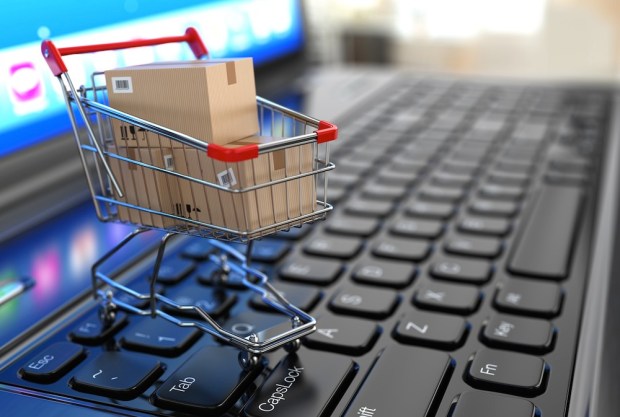The Inside Scoop: Black Friday Consumers

As of now, the big Thanksgiving Holiday weekend is in the past, and the official scoring has been in. Online shopping was the bigger winner, brick-and-mortar continued to suffer losses, more consumers spent, but they spent less per person because everything everywhere was on sale. Mobile had a mixed-results kind of weekend — it fizzled in stores as consumers once against decided to pay with plastic by and large — but sizzled for eCommerce as smartphones and other devices grabbed up over half the purchases.
That’s what you know, but under the numbers there are a few more takeaways worth noting and at least one worth being a bit concerned about. We talked to InfoScout’s CEO Jared Schrieber about what the receipts’ tea leaves showed for our latest edition of the Holiday Retail Tracker.
Some of what we heard was expected.
It was pretty well known that Black Friday had lost some of its specialness going into 2016, since most retailers barely waited to put away their Halloween decorations before jumping immediately on top of the holiday sales train. That there would have been less density on Black Friday would have been expected— simply because the deals were front-loaded.
But early shoppers weren’t the missing the part of the equation so much as late shoppers were, Schrieber noted.
“What is also happening are millennials are just pushing back their shopping more and more — and pushing their spending more and more to Super Saturday, that last Saturday before Christmas. While retailers are trying to pull in those sales and get people shopping earlier, the macro-trend is that millennials aren’t showing up.”
There are a sizable number of shoppers who are actually completely finished with their holiday shopping by the time Dec. 1 rolls around each year, Schrieber noted — but those shoppers tend to be divided between baby boomers and to a great extent Gen Xers who are getting out there to shop earlier.
Or actually, to be accurate for 2016, they are staying in to shop early — and increasingly not really drawing much distinction between Black Friday and Thanksgiving itself.
“Thanksgiving is more widely accepted as a shopping holiday, and those shoppers are increasingly skipping the store in favor of shopping online, Schrieber said.
Malls, most consumers reported, are hectic and busy — one consumer InfoScout spoke to noted that spending the day around grumpy, angry people was not his ideal way to spend a holiday Friday. Among those who did venture out, the most satisfied group of customers were those who bought online and pick-up in stores.
There was something of a surprise in that trend as well, Schrieber noted. Not that it was a positive result — curbside pickup customers reported overwhelming satisfaction in 2015, with 95 percent noting they would use it again — but that it managed to somehow be a better result than that. This year 98 percent of consumer reported a favorable disposition between the mixed-use buying case.
“That is a great response, particularly when you consider that this is a buying process that is a little complicated — the customer has to shop one place and pick up in another. That they managed to improve on the result from last year means retailers are really investing in the capability,” Schrieber said.
Which, he added, is going to be particularly important, since Amazon is so rapidly eating up the market share.
Amazon is increasingly becoming the new default.
Prime membership big growth between 2015 and 2016 — 20 percent, by some measures — is turning into a very big advantage for Amazon on big shopping days — because, according to Schrieber, they get first crack at their customers.
“When people become Prime members, it then becomes their default for where they go first for their purchases, especially non-grocery purchases. That means it is becoming a default as well for holiday shopping — and this is stretching into Black Friday,” he said.
Add to that, he noted, that Amazon Prime customers are particularly uninterested in going to stores at all. Much for the same reasons everyone else chooses to avoid them — it is easier to shop at home in PJs than fight for a parking space at the local mall or shopping center.
The Concerning Trend
While much of what happened in that big opening shopping season has run according to plan, there is at least one slightly alarming trend that Schrieber saw in the data that he wasn’t expecting to see.
“We are seeing people by smaller and smaller items, and we’re not seeing the bigger purchases as much,” Schreiber noted.
That is concerning, he noted, because it is unusual.
“Historically, the big-ticket purchases are done early in the shopping season.”
This result matches up with data as to why customers were didn’t shop early on Black Friday this year. As usual, the largest portion said they were avoiding crowds. But the second largest group noted they just didn’t have the money as of yet (26 percent). Those consumers reported feeling a bit pinched — and that they are holding out for that last paycheck of the month before really ramping up on Christmas shopping.
But if that ramp-up doesn’t come soon, it might be a rather more disappointing shopping season than anyone is prepared for.
“If those big-ticket purchases aren’t made in the next week or so, I don’t expect a recovery over the holiday season,” Schrieber noted. “If that is the experience of American commerce, that doesn’t bode all that well for holiday shopping or for us economically.”
